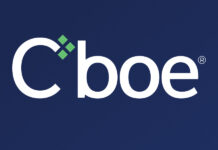The technology firm stepping into fixed income market making

Virtu Financial outlines its plan to make markets in credit and rates using its scaled global footprint and superior tech while building long term relationships.
The DESK spoke with head of credit sales, Phil Hartman (PH), and head of rates sales, Dan Eckstein (DE), of Virtu Financial about the evolving liquidity provision from non-bank market makers
Why branch into fixed income markets?
DE: As a global, cross-asset and cross-product market maker, becoming a dealer in the fixed income markets is a natural extension of our expertise in technology to provide clients with solutions across the entire life of a trade; from our EMS [Triton] and pre-trade analytics to market making and execution, TCA, and commission management. It is in Virtu’s DNA to leverage these offerings to clients in different markets.
PH: And more recent changes to the fixed income market structure allow us to have a larger impact than was previously possible.
What kind of structural changes?
DE: For us it starts with ETFs. Our fixed income offering was really born out of our ETF business, one of our flagship franchises where we are lead market maker in over 600 ETFs, offering block liquidity and facilitating creations and redemptions. It’s not news that the adoption of ETFs across fixed income markets has been significant and is accelerating giving market participants immediate access to liquidity while getting exposure to or hedging the underlying securities.
PH: As a market maker in fixed income ETFs, we already had inventory in the securities that compose the funds and an understanding of how to value and trade them. It was truly a natural extension to apply this understanding with the trading technology, as Dan mentioned previously, to fixed income markets, starting with credit and rates.
What do you see as the biggest changes in the respective markets?
DE: In Treasuries, the biggest market structural change is the evolution of the RFQ protocol which now can incorporate pre-programmed execution rules to overlay a low touch element into the buy-side’s trading workflow. We have spoken to many clients who cited the overwhelming amount tickets they need to execute each day. If a firm determines that a subset of their trades are below a certain size and are sufficiently liquid, then it makes sense to design rules that look at specific criteria and let these trades be auto-executed quickly and efficiently. This evolution plays into Virtu’s strengths as we leverage technology to provide our customers with important pre-trade information by disseminating real time axes and firm prices that can help inform and optimize their pre-programmed execution engines, identifying when Virtu is a good match for their trades.
PH: For corporates, it’s the size and scope of the market. We’re receiving on average around 30,000 investment grade RFQs daily across a growing number of CUSIPs and platforms. Given the magnitude, we have to lean heavily on technology to provide not only competitive pricing, but efficient execution and settlement as well.
How do you manage the risk given the broad scope you mentioned?
PH: While we’re again leaning heavily on technology to closely monitor and manage risks across things like issuers, sectors, and tenors we also have a team that watches the trading operation and they have developed protocols and automated tools to quickly identify and alert for potential problems and adjust.
DE: Every segment of fixed income has its own unique market structure. Credit has thousands of different instruments to trade, most of the time electronically in small trade sizes. Treasuries has a much narrower universe of instruments, but risk transfers can be significantly larger. So approaching each market from a risk management perspective is completely different. In rates, we internalize flow when possible and are thoughtful about how we hedge in an effort to reduce market impact not only when accessing our own liquidity needs, but for our customers who trade with us.
How do you reconcile the emphasis on technology with a client facing business?
PH: Virtu works to make execution easier. We are currently working on several initiatives with clients to improve their access to the market, like agency algos and more exchange-like liquidity in both treasuries and credit. Partnering to understand how they approach the market and reducing friction to that approach.
DE: Electronic trading adds operational efficiency to workflow, but it does not replace interpersonal relationships. We are a different type of liquidity provider and it’s critical to be in front of clients to explain how a firm like Virtu can add value. For example, our fully algorithmic approach to market making helps ensure that our clients consistently get competitive quotes back immediately, even in volatile market conditions. Further, we take a more consultative approach than more traditional sell side. We look at the ways to approach the market to execute and measure Virtu’s performance on those trades. Also, I agree with Phil’s assessment that there is a willingness at Virtu to partner with customers and pursue innovative ideas. We’re not afraid to try and if we fail, we learn from those situations as well.
©Markets Media Europe 2025













